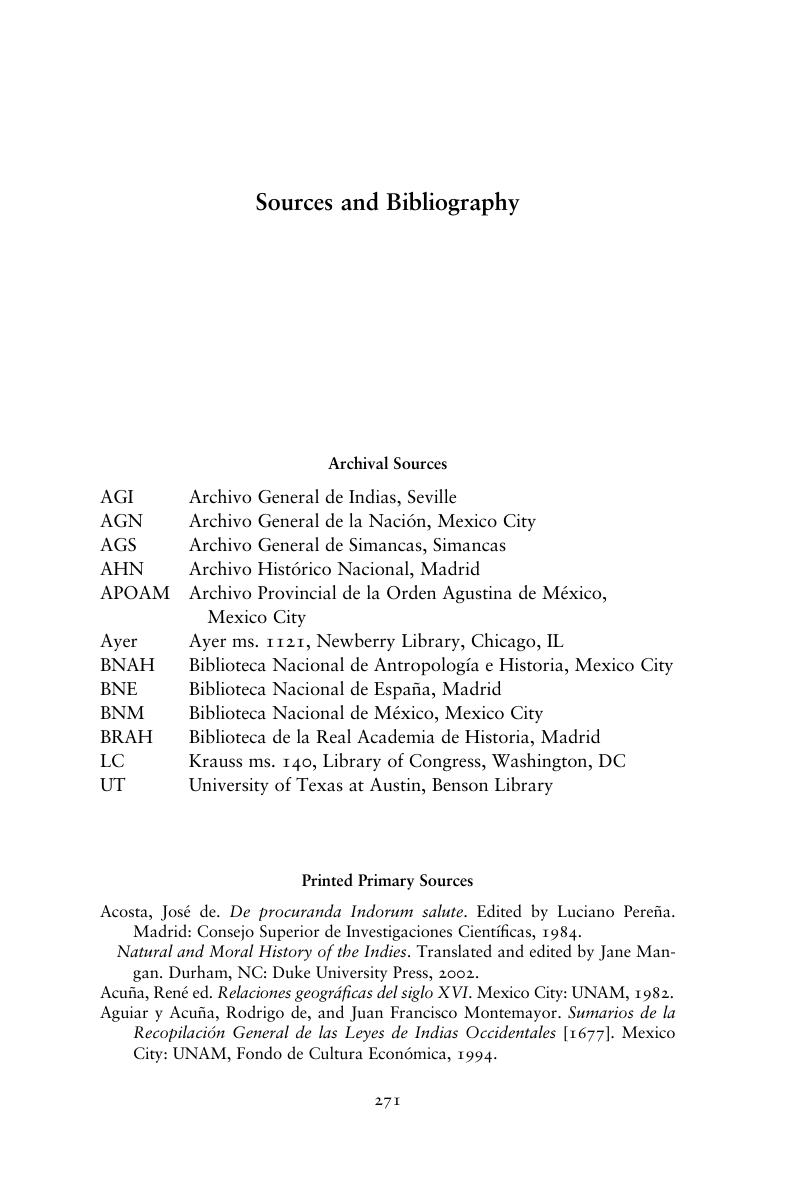Book contents
- The Mexican Mission
- Cambridge Latin American Studies
- The Mexican Mission
- Copyright page
- Dedication
- Contents
- Figures
- Maps
- Tables
- Acknowledgments
- Introduction
- Part I Conversion
- Part II Construction
- Part III A Fraying Fabric
- Appendices
- Glossary
- Sources and Bibliography
- Index
- Cambridge Latin American Studies
- References
Sources and Bibliography
Published online by Cambridge University Press: 13 June 2019
- The Mexican Mission
- Cambridge Latin American Studies
- The Mexican Mission
- Copyright page
- Dedication
- Contents
- Figures
- Maps
- Tables
- Acknowledgments
- Introduction
- Part I Conversion
- Part II Construction
- Part III A Fraying Fabric
- Appendices
- Glossary
- Sources and Bibliography
- Index
- Cambridge Latin American Studies
- References
Summary

- Type
- Chapter
- Information
- The Mexican MissionIndigenous Reconstruction and Mendicant Enterprise in New Spain, 1521–1600, pp. 271 - 294Publisher: Cambridge University PressPrint publication year: 2019



